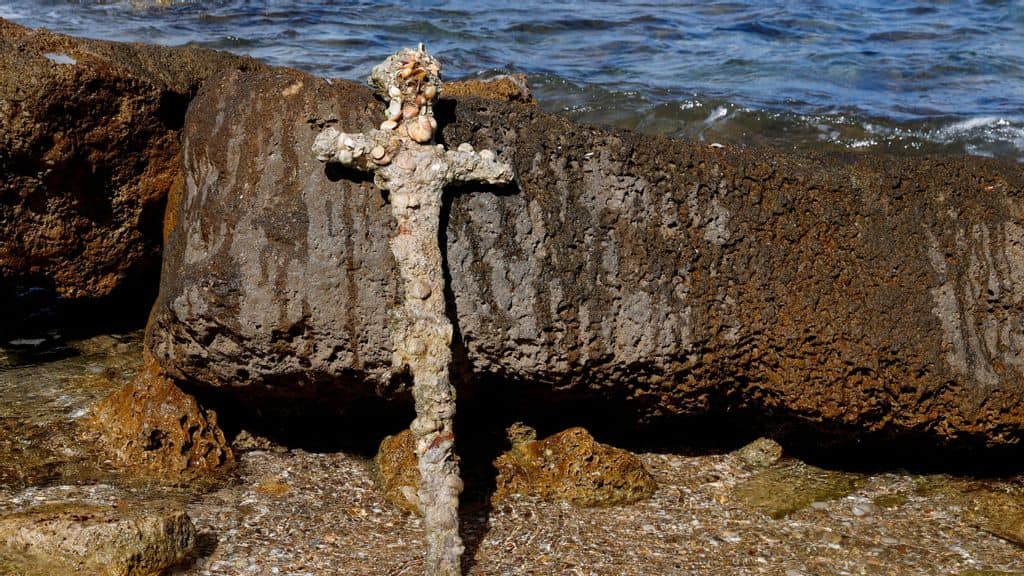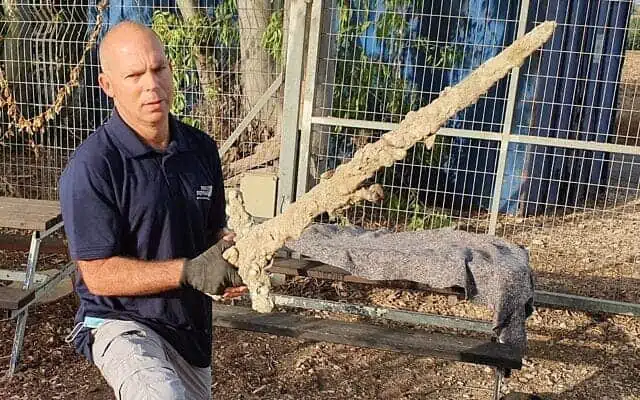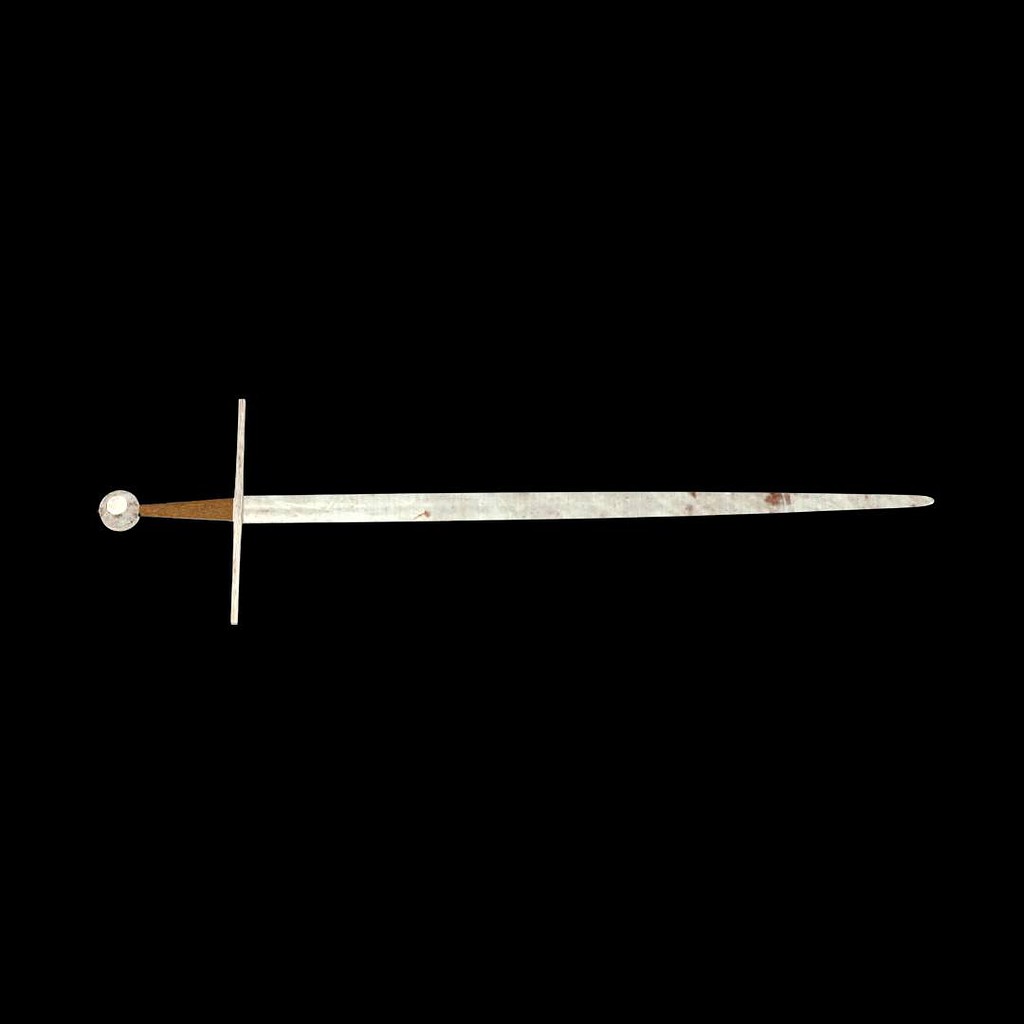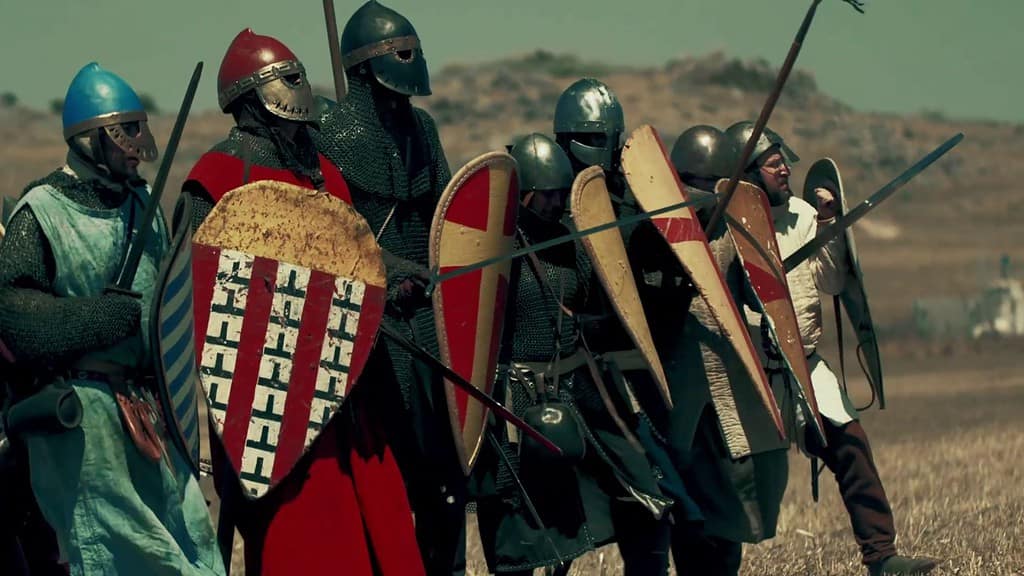
In 2021, on an ordinary Saturday dive off the coast of Carmel Beach in northern Israel, Shlomi Katzin made an extraordinary discovery. Beneath the waves, aided by favorable meteorological conditions that shifted the sand, there were metal anchors and a peculiar elongated object. This would later be identified as a 900-year-old longsword from the time of the Crusades.
Who did this magnificent sword belong to and why did it wash up on Carmel Beach? Though the mystery hasn’t been entirely solved, scientists have now made new revelations that could answer these questions, according to a new study by the Israel Antiquities Authority (IAA) and the Soreq Nuclear Research Center.
A forgotten Crusader legacy
The Crusader sword was discovered covered in marine organisms, which surprisingly acted as a protective layer, preserving the metal and leaving it in astonishingly good condition for such an ancient relic.
Researchers used X-ray imaging to study the sword without removing the encrustations of sand and shell that had accumulated over centuries. This investigation revealed telltale clues that point towards a tragic fate for the warrior wielding the medieval sword, who likely perished during a naval battle.

“The sword was used by a Crusader warrior who settled in the country after the First Crusade and established the Kingdom of Jerusalem in 1099,” said Jacob Sharvit from the Israel Antiquities Authority.According to Jacob Sharvit from the Israel Antiquities Authority, the sword was utilized by a Crusader warrior who migrated to the land after the conclusion of the First Crusade. This particular Crusader played a role in establishing the Kingdom of Jerusalem in 1099.
“Considering the bloody battles that took place in the country between the Crusaders and the Muslims, known from several historical sources, we could expect to find more such swords. In practice, we mostly find fragments, very few whole swords.”

A weapon of the elite
Interestingly, despite the battles, intact swords from this period are scarce. So far, only seven swords from this era have been found in Israel, with most of them recovered from the sea.
While the Crusades spanned several centuries, the actual number of swords produced during that time was not as high as one might expect. The process of crafting swords during the medieval period was laborious and time-consuming, involving skilled blacksmiths who worked with limited technology and resources. As such, only lords and their knights could afford swords.
“Only the nobility and professional soldiers fought with swords because they were expensive to make and required training and practice to use,” said IAA researcher Joppe Gosker.

The bulk of the Crusading armies were manned by peasants mixed with knights and professional soldiers who used spears, battleaxes, maces, clubs, bows and arrows, and very rarely swords. The fact that this valuable sword was found alone without a scabbard abandoned at sea suggests it was lost during the heat of battle, likely along with its owner.
Carmel Beach, where the sword was found, is known as a natural anchorage that has been in use since as early as 4,000 years ago. It was likely also used by the Crusaders 900 years ago to land on the shores of the Holy Land. The site likely saw many naval battles between Crusaders and their Muslim enemies.
A window into history

The Crusades were a series of religious and military campaigns that took place between the 11th and 13th centuries. Triggered by the call of Pope Urban II at the Council of Clermont in 1095, the First Crusade aimed to reclaim the Holy Land, particularly Jerusalem, from Muslim control.
In 1099, after a grueling and bloody siege, the Crusaders captured Jerusalem and established several Crusader states in the Levant. Subsequent Crusades were launched to reinforce these states and protect Christian pilgrims, but their success varied, with some achieving minor gains and others ending in failure.
The most notable Crusades include the Second Crusade (1147-1149) and the Third Crusade (1189-1192), which involved prominent European leaders like Richard the Lionheart of England and Frederick I of Germany. Despite occasional victories, the Crusader states faced constant threats from Muslim forces, eventually leading to their gradual decline and eventual loss of Jerusalem to the Muslim ruler Saladin in 1187.
The later Crusades faced diminishing support from European rulers and dwindling enthusiasm among the general population. The Seventh and Eighth Crusades, led by King Louis IX of France, attempted to regain control of the Holy Land but ultimately failed. The final Crusade, the Ninth Crusade, occurred in 1271-1272 when King Edward I of England launched an expedition to the Holy Land, which ended in a truce rather than military success.
Despite the numerous Crusades and their ultimate failure to maintain a lasting Christian presence in the Levant, the period of the Crusades left a profound impact on the cultural, political, and religious landscape of Europe and the Middle East, and their legacy continues to be studied and debated by historians to this day. The discovery of this iron Crusader-era sword reminds us that history has much to reveal, even when hidden deep beneath the waves.
The findings appeared in the journal Atiqot.






